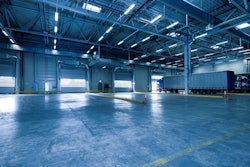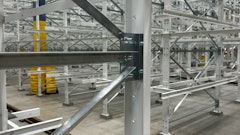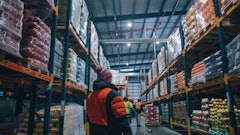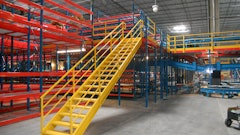
Few places in the modern world are as directly linked to our physical survival as the neighborhood grocery store. A truly essential service, their position as the main food source for most of the population has been well established since the mid-twentieth century, and their format has evolved in only small ways since - until recently. Organic produce and specialty foods may have injected the industry with new energy in recent decades, but architecturally, the emerging trends tied to technology, consumer behavior and order fulfillment – accelerated by the pandemic – are altering the traditional grocery store in unprecedented ways.
Aggressively expanding national retailers, whether historically brick-and-mortar or newer online powerhouses, have begun offering new levels of convenience, speed and safety, making at-home shopping via computers or smart phones mainstream. Big boxes have made waves and some online retailers have shaken things up further with moves into traditional grocery retailing powered by their proprietary technology and branding twists.
Meanwhile, the proliferation of industry-adjacent providers have been stepping in to offer additional competitive options to consumers seeking alternative channels. In response to all of this, traditional neighborhood grocery stores have begun embracing technology advancements to compete, while also re-thinking their physical stores, particularly how their inventory can be multi-channeled out more profitably to contemporary consumers.
Multi-channel means multi-parking and multi-access
For decades, grocery shopping was essentially a mono-channel affair, which required a simple one-size-fits-all approach to parking. With the advent of multi-channel shopping, suddenly parking must be thoughtfully organized to perform an array of tasks. Curbside pick-up spaces attended by store employees compete for space with traditional handicap and 20-minute spaces needed by in-store shoppers. Third-party technology companies may send fulfillment agents in under the guise of direct consumers, but the store’s proprietary delivery associates need designated parking in convenient – yet somehow out of the way – places adjacent to newly established in-store staging rooms. Sprinkle in the recent requirements in many jurisdictions for electric car charging spaces, and the retailers and their architects have quite a design challenge to work out. And, this gets even more complex in dense urban projects that require structured parking above or below the main store. Which of the rare parking spaces are at grade? Whose convenience is most important? One possible solution might be to deploy limited teaser parking at store level with curbside service and an adjacent ramp leading up or down to the main roof parking field. There, in-store shoppers park near brightly lit, public, vertical circulation lobbies, and fulfillment associates can park in the opposite corner and use a more subtle keycard activated elevator to collect their delivery consignments on the store level and its staging areas.
Fixture plans are flexing
The interior floor plans are also shifting to accommodate these trends. Stores’ sales floor areas are besieged by increased back-of-house requirements for staging rooms, additional “quick ship” back stock and other spaces required to successfully carry out a delivery service. In some cases, staging rooms begin to encroach on the store’s frontage to serve curbside loading. While two main in-store shopper entrances have been the norm for decades, self-serve checkout aided with technology has begun pushing toward a single main door, and the secondary doors in new and remodeled stores become secured access points for non-traditional channels.
Health concerns have eliminated self-serve and hot food bars that were once a main feature, leading many stores to transition these types of offerings to expanded counter service areas adjacent to indoor seating, and former self-serve space becomes expanded display for specialty foods, snacks and expanded beer and wine offerings.
Enhanced technology
In today’s technology-rich climate, creative digital solutions are at our fingertips 24/7, and there is no reason grocery stores should be the exception. A host of tools are being leveraged for exceptional end-user experiences. App-based coupons and shopping aides have been around for a few years and will continue to gain steam as phones are used for even more tasks around the store, including checkout and payment. Smart shopping aids continue to improve by understanding a buyers’ habits, helping them save time and predicting new products that might be of interest. Checkouts are an active experience that concludes one’s shopping trip, and while this will remain the case in many stores, cutting-edge technologies will enable this via passive means.
Location and locality for the win
Not all grocery chains and even fewer local mom-and-pop markets can compete with the big boxes or online giants’ technology implementations or price points. While even the smallest operators can embrace trickle-down technology trends and welcome third-party delivery service providers, it’s unlikely they will be able to win that game and their prices will generally be higher.
Ultimately, these neighborhood players still have a couple trump cards -- location and the sense of place. Location beats technology when a store is a short walk away or on the way home from work or school. A sense of history and locality beats price wars when people in the community share a sense of ownership and loyalty with well-run and socially engaged markets. While one might get a suddenly needed gallon of milk delivered from a bigger operator within a couple of hours, running into a conveniently located community grocer where the clerk recognizes you is hard to beat. One of the more positive outcomes of a shared pandemic experience is a newfound appreciation for community, ultimately allowing the smaller, more local shops to still hold a strong defined position in the market.




















